Plant Health Care Services in Lancaster Pa
(717) 538-8762
Revitalize Your Garden: Achieve Thriving Plants with Expert Plant Health Care
Douglas Tree Service doesn’t just trim trees – we’re dedicated to staying ahead of the curve when it comes to insect and disease management.
We’re passionate about maintaining the health and vitality of your greenery while minimizing our environmental footprint.
With a personalized approach, we provide expert advice and tailored treatment plans to ensure your landscape thrives. Because when your outdoor space flourishes, so do we.
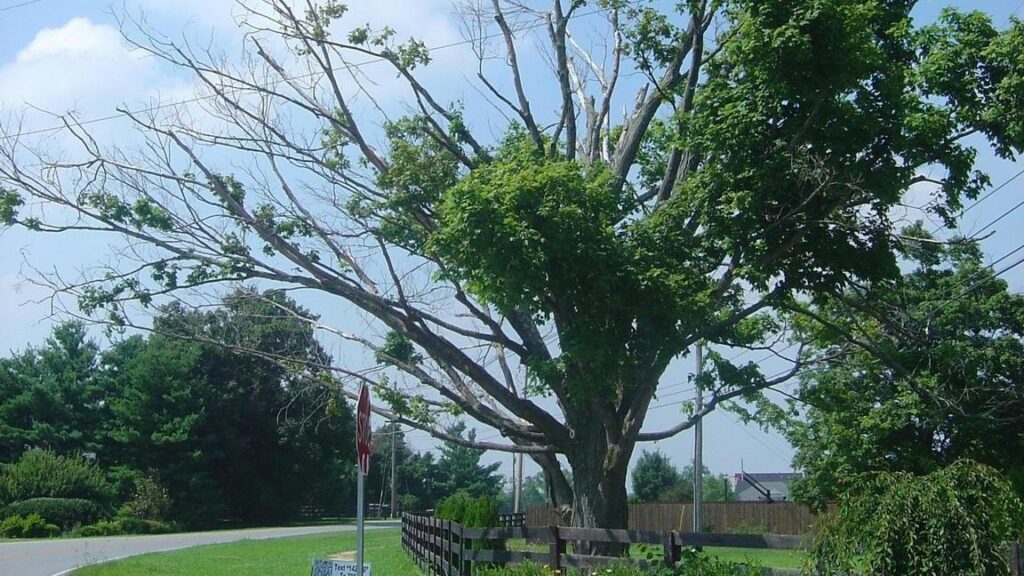
Comprehensive Plant Health Care Services to Ensure Lush, Vibrant Growth
Professional Tree & Plant Health Care by Douglas Tree Service offers specialized plant health care to transform your garden into a flourishing oasis.
Our services include disease and pest management, soil analysis, and nutrient optimization to promote robust plant growth.
With our expert care, your plants will thrive, creating a lush, vibrant landscape that enhances the beauty and value of your property.
Trust us to provide the knowledge and attention your garden needs for lasting health and vitality.
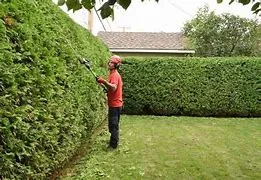
Learn how much shrub and bush removal or trimming costs in Lancaster, PA. Get a cost breakdown for different plant sizes and types. Expert insight inside!
“Cost Guide: Shrub and Bush Removal or Trimming Services in Lancaster, Pa.”
The Importance of Shrub and Bush Removal or Trimming
Shrubs and bushes are an essential part of any landscape. They add beauty, color, and texture to the environment, making it more appealing to the eye. However, without proper maintenance, they can become overgrown and unsightly.
That’s where shrub and bush removal or trimming come in. One of the primary reasons for removing or trimming shrubs and bushes is to maintain their health.
Overgrown shrubs can become a breeding ground for pests and diseases that can spread to other plants in the area. By removing dead or diseased branches, you can prevent further damage and promote healthy growth.
Another reason why shrub and bush removal or trimming is necessary is for safety reasons. Overgrown branches can obstruct walkways, driveways, or power lines, posing a significant hazard to people’s safety.
By removing these branches, you can create a safer environment for yourself and others. Moreover, removing overgrown shrubs helps improve the aesthetics of your landscape.
Shrubs that are left unattended can quickly become unsightly eyesores that detract from your property’s beauty instead of enhancing it. Trimming them regularly will help keep them looking neat and well-groomed.
Overview of Cost Factors
The cost of shrub and bush removal or trimming depends on several factors such as size, type of plant species being trimmed/removed location accessibility complexity in terms of landscaping equipment required weather conditions etc. Size is one of the most significant cost factors when it comes to shrub/bush removal or trimming services in Lancaster PA. For example: smaller bushes/shrubs typically cost less than larger ones because they require less time/labor/equipment handling them safely during removal/trimming tasks.
Another factor affecting costs is accessibility; how easy it is for workers to reach the area where the work needs doing? This could involve factors such as the terrain ruggedness, or whether or not a ladder is needed to get to the plant.
Complexity is another factor that affects costs. The more complex the work, the higher the cost is likely to be.
For example, if your shrubs or bushes are located in a hard-to-reach area like a cliff, then this would require specialized equipment and additional labor costs. Additionally, weather conditions also play a role in determining costs.
If it’s raining heavily outside on the scheduled day of service provision for removal/trimming services for your shrubs/bushes, this may cause delays and additional rescheduling fees. When considering shrub and bush removal or trimming services in Lancaster PA, you need to consider these factors: size, accessibility/location complexity equipment requirements and weather conditions etc. Doing so will help you make informed decisions when choosing the appropriate company for your needs while also ensuring that you get quality services at an affordable price.
Factors Affecting the Cost
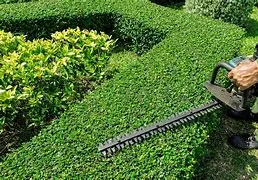
When it comes to shrub and bush removal or trimming, there are several factors that can impact the cost of the job. Understanding these factors can help you budget and plan for your project more effectively. Below are some of the most important factors that determine how much you’ll pay for shrub or bush-related services.
Size and Type of Shrubs/Bushes
Perhaps one of the most obvious factors affecting the cost of shrub or bush removal/trimming is their size and type. Smaller shrubs and bushes will naturally be less expensive to remove or trim than larger ones, as they require less time and effort to work on.
Additionally, certain types of shrubs/bushes may be more expensive to work with than others due to their density, shape, or other characteristics. For example, if a particular type of shrub requires more precise cutting techniques or specialized equipment to remove/trim properly, this could drive up the overall cost of your project.
Accessibility to the Area
Another major factor affecting the cost is accessibility. If your shrubs/bushes are located in areas that are difficult to access (such as steep hillsides), this will make it harder for workers/equipment to reach them – which can add extra time and expense onto your project. On top of that, if you have any obstacles in your yard (like large rocks or trees) that make it hard for workers/equipment to maneuver around them, this could also increase overall costs.
Complexity of the Job
The complexity level involved in removing/trimming your shrubs/bushes is another key factor affecting costs. If a job requires more detail-oriented work (like shaping bushes into specific designs), it will likely take longer – which means a higher price tag. Similarly, if there are any additional complications involved in the job (like working around other landscaping features or dealing with diseased/infested shrubs), this could also lead to higher costs.
Equipment Needed for the Job
The equipment needed for your shrub/bush project will also affect how much you’ll pay. If a job requires specialized equipment (like cranes or cherry pickers), this will naturally drive up the cost.
However, even basic tools like pruning shears and saws can impact pricing if they need to be rented by workers or if they require special maintenance. Additionally, if you have a particularly large job, it may require more workers/equipment than usual – which could increase overall costs exponentially.
All of these factors can come into play when determining how much you’ll pay for your shrub/bush-related services. As such, it’s important to keep them in mind when budgeting and planning your project.
However, don’t let high prices deter you from investing in your landscaping! Properly maintaining and removing shrubs/bushes is essential for keeping your yard healthy and looking its best – so it’s worth investing in quality work that will last.
Cost breakdown for shrub and bush removal or trimming in Lancaster, PA
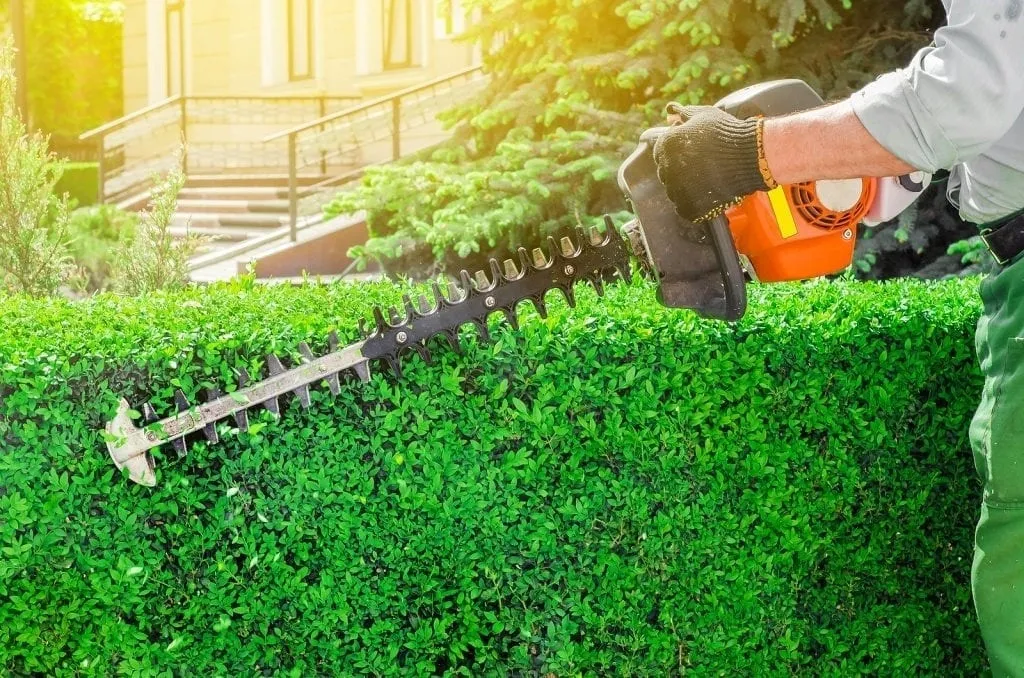
Shrub Removal Costs
Shrubs are an essential part of any landscape as they add color and texture to the garden. However, when they grow out of hand, they can become not only unsightly but also a hazard to the property.
Removing them may seem like a daunting task, but it is necessary to keep the garden looking fresh and beautiful. There are different types of shrubs depending on their size, shape, and texture.
Shrub removal costs vary depending on their size and complexity of the job. Small shrubs (less than 3 feet) cost between $50-$100 per plant to remove.
Medium-sized shrubs (3 to 6 feet) cost between $100-$200 per plant, while large shrubs (6 to 12 feet) cost between $200-$300 per plant. Removing small shrubs may seem like an easy task that you can handle on your own.
However, it is vital to hire a professional as they have the right equipment and expertise required for the job. A professional landscaper will ensure that all the roots are removed without damaging any other plants or structures in your yard.
Bush Removal Costs
Bushes add beauty and privacy to any landscape; however, when they become overgrown or diseased, removing them becomes necessary. Bushes are more complicated than shrubs as they have more branches; hence more work is needed for removal.
Small bushes (less than 3 feet) cost between $100-$150 per plant for removal in Lancaster PA while medium-sized bushes (3 to 6 feet) cost between $150-$250 per plant. Large bushes (6 to 12 feet) require more time and effort; therefore, their removal cost ranges from $250-$350 per plant.
It is essential to hire a professional landscaper to remove bushes as they have the right equipment and expertise for the job. Removing bushes on your own may result in injuries or damage to property.
The cost of removing shrubs and bushes depends on their size, complexity of the job, and accessibility of the area. In Lancaster PA, small shrubs cost between $50-$100 per plant while large shrubs cost between $200-$300 per plant for removal.
Small bushes (less than 3 feet) cost between $100-$150 per plant while large bushes (6 to 12 feet) require more time and effort; therefore, their removal costs range from $250-$350 per plant. It is important to hire a professional landscaper for both shrub and bush removal as they have the right equipment and expertise required for the job.
Removing overgrown or diseased shrubs or bushes can be an eyesore in your garden. Hiring a professional landscaper will ensure that they are adequately removed, making room for new growth and enhancing the beauty of your garden.
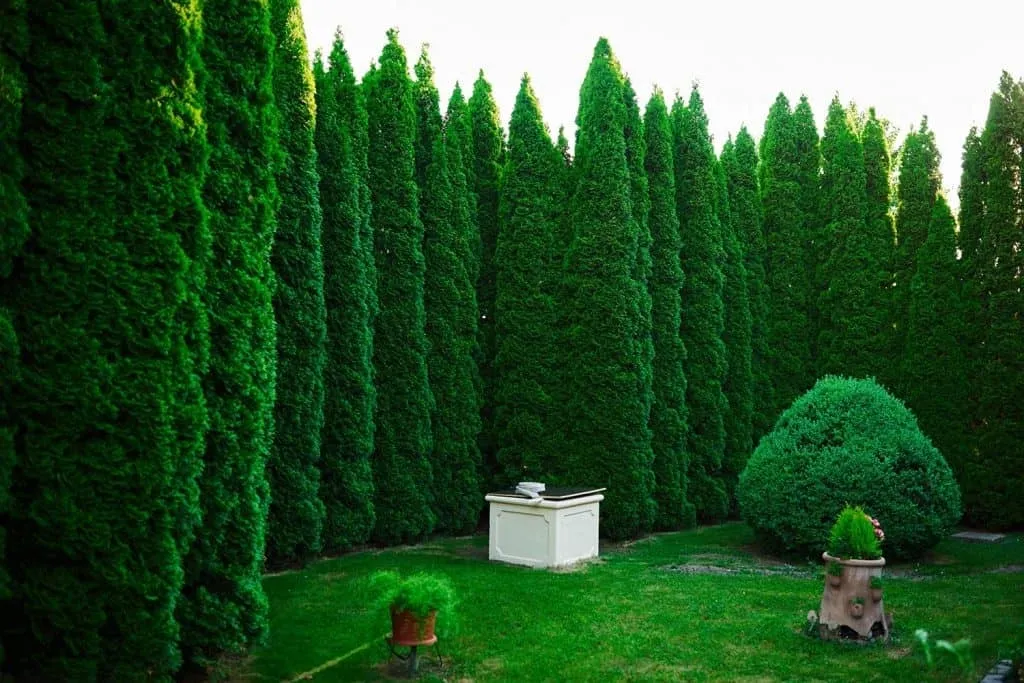
Shrub Trimming Costs
Shrub trimming is a great way to keep your plants healthy and looking their best. The cost of shrub trimming in Lancaster, PA, varies depending on the size and complexity of the job.
Small shrubs can be trimmed for as little as $50-$100 per plant, while larger shrubs may cost $200-$300 per plant. When it comes to shrub trimming costs, the type of plant also plays a role.
Some plants are more difficult to trim than others due to their shape or density. For example, a boxwood shrub that has been regularly trimmed will be easier and less expensive to maintain than an overgrown privet hedge.
It’s important to note that pricing for shrub trimming is usually based on hourly rates rather than flat fees since each job is unique. Additionally, some companies charge extra fees for hauling away debris or cleaning up after the job is complete.
Small Shrubs (Less Than 3 Feet)
Small shrubs are typically easy and quick to trim. They may only require some minor shaping or cutting back of dead branches.
In Lancaster, PA, small shrubs can be trimmed for as little as $50 per plant. However, it’s important not to neglect small shrubs entirely since they still need regular maintenance to stay healthy and looking their best.
Neglected small shrubs can quickly become overgrown and unsightly. If you have several small shrubs on your property that need trimming every year, consider hiring a professional landscaping company on an ongoing basis rather than paying for individual jobs each time.
Conclusion
Overall, the cost of shrub removal or trimming in Lancaster, PA varies depending on a variety of factors including size and complexity of the job. While DIY solutions may seem like a cost-effective option, it’s important to remember that professional landscapers have the experience and equipment necessary to get the job done quickly and efficiently. By hiring a professional, you can be sure that your shrubs and bushes will be trimmed or removed safely and correctly.
Additionally, ongoing maintenance can help keep your plants healthy and looking their best for years to come. So don’t hesitate to reach out to a local landscaping company for a quote today!
Hedge, Shrub, and Bush Removal: How Much Does it Cost?
If you’re looking to remove or trim your shrubs, hedges, or bushes, it’s essential to know the cost. The price of removal varies depending on several factors, including the size of the plant, root structure, soil type, accessibility, and repair required. In this article, we’ll go over everything you need to know about the cost of hedge, shrub, and bush removal or trimming.
Factors Affecting the Cost of Hedge, Shrub, and Bush Removal
The cost of removing your shrubs and bushes is impacted by several factors. Some of these include:
- Size of the Plant: The bigger the plant, the higher the removal cost. It takes more time and effort to remove larger shrubs and bushes.
- Plant Type: Different types of shrubs and bushes have different structures, making some easier or harder to remove than others.
- Root Structure: Removing shrubs and bushes with deeper root systems requires more work, time, and effort.
- Soil Type: The soil type can affect the difficulty of removal, especially if it’s rocky or compacted.
- Accessibility: If the shrubs or bushes are in a hard-to-reach location, the removal cost will be higher.
- Repair: Depending on the extent of the removal, there may be repairs required to the surrounding area, adding to the total cost.
Saving Money on Hedge, Shrub, and Bush Removal
You may be able to save money by doing some of the work yourself. For example, clearing the area surrounding the shrubs and bushes, eliminating any debris, and removing the top layer of soil will decrease a contractor’s time and effort. After the shrubs and bushes are removed, you could bring in soil and plant or rejuvenate the area yourself.
Another way to save money is by having a professional remove shrubs during mid to late winter. During this time, bushes have fewer or no leaves, making them easier and safer to cut and remove.
Conclusion
Removing your shrubs, hedges, or bushes can be a necessary but costly project. However, understanding the factors that impact the cost and ways to save money can help make the process smoother and less expensive. Whether you decide to do the work yourself or hire a professional, it’s essential to plan and budget accordingly.
Shrub and bush removal cost estimator by size
The cost to remove shrubs and bushes depends on the size and height of the plant and the plant’s root system. Taller shrubs and bushes are more expensive to remove than shorter ones. Also, smaller shrubs have less established roots than older shrubs, making them cheaper and easier to remove.
The honeysuckle, for example, would cost on the lower end to remove. It grows only to about 3 feet tall. Camellias can grow between 6 feet and 12 feet tall, and fall somewhere in the $80 to $300 range per bush to remove.
Project size Average cost per bush
Small (1 ft. – 2 ft.) $20 – $45
Medium (2 ft. – 4 ft.) $45 – $80
Large (4 ft. – 6 ft.) $80 – $150
Extra large (over 6 ft.) $150 – $300
Other factors that affect cost
Some of us love surprises and some of us don’t. But no one likes a surprise that adds unexpected expenses to a project we’ve already budgeted for. Let’s take a look at some other price determinants.
Type of plant
Root structure, soil type, and stumps
Accessibility
Related services
Keeping a well-kept and attractive yard is a part of homeownership. Here are some other things you can do to maintain your property.
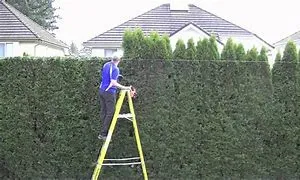
Shrub and bush trimming
Some factors that affect the cost to trim shrubs and bushes are how many you are trimming, their size, and whether the contractor charges per hour or per bush.
Bush and shrub trimming costs $6 to $15 per bush. Contractors usually charge $50 to $75 per hour. Shrub trimming is pretty easy, so you may opt to DIY it. If you already have the tools, DIY is free. If not, the equipment will cost, on the low end, about $345 to $365.
Hedge trimming
What’s the difference between a hedge, shrub, and bush? Shrub and bush are used interchangeably, and they are very similar.
A shrub and bush are small woody plants with a height of less than 15 feet. Shrubs are usually pruned and shaped. Bushes, on the other hand, are left to grow wild. Hedges are bushes or shrubs growing closely together and are used as a privacy screen, border, or fence.
Since hedges have both practical and aesthetic uses, many choose to keep and maintain them. The average hourly costs for trimming hedges is $75, whereas the average cost to remove is $150.
To learn more about about shrub and bush removal call our Lancaster County-based service at (717) 538-8762 or Visit our website for a free estimate.
We’re a little different than the average tree services company.
Learn more about Douglas Tree Service Arborists!
Our Lancaster, Pennsylvania-based tree doctors can explain how sustainable tree care services add more value to your bottom line.
Healthy trees, healthy lives.
Our Plant Health Care Services
Our plant health care service is focused on the well-being and maintenance of plants, trees, and landscapes.
These services typically include a range of activities aimed at promoting the health, vitality, and longevity of plants in residential, commercial, or public spaces.
Some common services offered by plant health care providers may include:
- Diagnosis and Assessment: Our experienced professionals assess the condition of plants, identify diseases, pests, and other issues affecting their health.
- Treatment and Prevention: Based on the diagnosis, appropriate treatments are applied to control pests, diseases, and nutrient deficiencies. Additionally, preventive measures may be implemented to minimize future problems.
- Pruning and Tree Trimming Lancaster PA
- : Regular pruning and trimming help maintain the shape, structure, and overall health of plants. This also promotes proper growth and flowering.
- Fertilization: Providing plants with essential nutrients through fertilization ensures they have the necessary resources for healthy growth and development.
- Tree Care: Specialized services for tree health may include pruning, disease treatment, root management, and tree risk assessment
Ensuring the health and vitality of your plants can be a complex and ongoing challenge without professional plant health care services.
Regular tree maintenance, such as tree trimming, is crucial for preserving the health and beauty of your plants. Without the expertise of professional plant health care services, maintaining your plants’ vitality can be a daunting task. Our team offers tailored solutions to address your specific needs, ensuring your plants thrive year-round.
Neglected plant health can lead to a variety of problems, such as:
- Plants becoming susceptible to diseases and pests, causing extensive damage.
- Poor soil conditions that hinder plant growth and overall health.
- Nutrient deficiencies that result in weak, underdeveloped plants.
- An unattractive garden that fails to enhance the beauty of your property.
Douglas Tree Service provides expert plant health care services to maintain and improve the health of your plants, ensuring they thrive.
Douglas Tree Service is your trusted partner for expert plant health care in Lancaster, PA. When it comes to maintaining and improving the health of your plants, why you should hire a professional tree service? Our team offers tailored solutions to address your specific needs, ensuring your plants thrive year-round. From routine care to specialized treatments, we have the expertise to keep your plants healthy and vibrant.
Benefits
- Disease and Pest Management: Our specialists identify and treat diseases and pest infestations promptly, preventing further damage.
- Soil Analysis and Optimization: We analyze soil conditions and make necessary amendments to promote healthy plant growth.
- Nutrient Management: Proper nutrient management ensures your plants receive the essential elements needed for robust growth and development.
- Enhanced Aesthetics: Healthy, vibrant plants significantly improve the appearance of your garden, increasing your property’s curb appeal and value.
- Long-Term Plant Health: Regular care and maintenance ensure the long-term health and vitality of your plants, creating a sustainable and beautiful landscape.
Plant Health Care Program
Embarking on a transformative journey to nurture the vitality of your plants, we meticulously tend to the health and beauty of your trees and shrubs.
Our carefully curated approach involves a harmonious blend of seasonal fertilizers, oils, insecticides, and fungicides, precisely tailored to strengthen your green companions against pests and various environmental challenges.
Executed through our meticulously planned six-visit seasonal schedules, our dedicated efforts aim to cultivate a thriving ecosystem, fostering the growth of your arboreal and shrubbery assets.
All tasks are expertly carried out by our skilled team of applicators, ensuring optimal care and results.
Our Services:
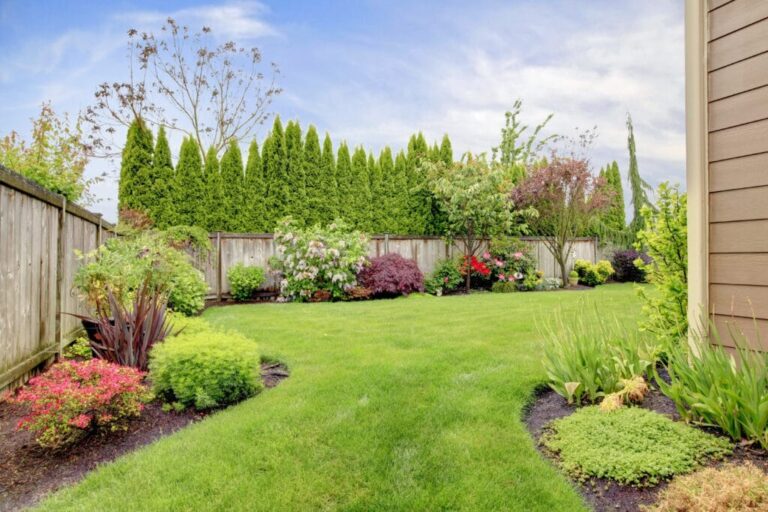
Plant Health Care
At our service, we don’t just glance over your greenery; we meticulously pinpoint the threats lurking around your trees and shrubs.
Our expert team devises precise plans tailored to your garden’s needs, ensuring proactive measures against pesky insects and harmful diseases.
Through strategic seasonal treatments, we fortify your plant material, deterring any potential harm from taking root and safeguarding your outdoor haven.
Proper Pruning
Pruning isn’t just about snipping away at branches; it’s about sculpting nature’s beauty.
By selectively removing branches from trees and shrubs, we’re not only enhancing their health but also elevating their aesthetics.
Safety and space management also come into play, ensuring a harmonious coexistence with our surroundings.
But the key to effective pruning lies in following the ANSI A300 standards, guiding us towards precision and excellence in our horticultural endeavors.
So, the next time you contemplate pruning, remember, it’s not just about cutting, it’s about crafting.
We offer the following types of pruning for trees and shrubs:
- Maintenance pruning
- Crown cleaning, reduction, and raising
- Deadwood pruning to eliminate storm damage and other hazards
- Structural pruning
- Vista pruning
Treatments applied to a tree, such as pruning and fertilizing, can influence the appearance and vitality of the underlying turf grass.
The care of each plant in a landscape can affect the health of every plant in that landscape.
Targeted Pest Treatments
At our company, safeguarding your landscape is our specialty, and we do it with a natural touch.
Recognizing the uniqueness of each property, we tailor our solutions to fit individual challenges.
Our team of experts carefully assesses your pest situation to make well-informed decisions.
By employing a targeted approach, we minimize the use of pesticides, applying them only where necessary.
Furthermore, we utilize effective products and introduce beneficial insects to ensure a solution that preserves the health and natural beauty of your landscape.
Trust us to protect your outdoor space with care and expertise.
Douglas Tree Service will help you with treating all your insect and disease infestations including:
- Emerald Ash Borer
- Woolly Aldegid
- Bag Worms
- Japanese Beetles
- Tent Caterpillars
- Lantern Flies
- Azalea Lacebug
- Anthracnose on Dogwoods or Sycamores
- Carpenter Ants
- Apple Cedar Rust on hawthorns and junipers
- And More!
DIY: How to Save Your Dying Tree from Carpenter Ants – Using Boric Acid to Rid Them
Professional Tip: If you notice a limb dying here then there, over a period of time. Then more then likely Ants have entered your tree. Most experts wont tell you that. 90% of all the dead trees we remove are due to carpenter ants. Most homeowners can never tell into its to late. So I included this article so you can take preemptive actions to make sure your trees don’t fall victim to Carpenter Ants.
Trees are some of the most valuable assets in any landscape, providing shade, beauty, and benefits to the environment. However, when carpenter ants invade, they can compromise the health of your tree, accelerating decay and even causing structural damage. If you’ve noticed sawdust-like material at the base of your tree, hollow-sounding wood, or large black ants scurrying around, it’s a sign that carpenter ants may have moved in.
But don’t worry—there are effective DIY ways to save your tree! One of the most efficient solutions is using boric acid, a natural insecticide that can help eliminate these destructive pests. Let’s dive into how carpenter ants affect your tree, and how boric acid can rid them before it’s too late.
Understanding Carpenter Ants and Tree Damage
Carpenter ants don’t actually eat wood, but they tunnel through it to build their nests, preferring wood that’s already damp or decayed. These pests are often found in trees that are already weakened by rot, fungus, or damage, and their tunneling can accelerate the decline of an already struggling tree. While the ants themselves don’t directly kill the tree, their presence can be a red flag that your tree is in distress and needs immediate attention.
Signs of Carpenter Ant Infestation:
- Wood shavings or sawdust around the base of the tree (this is called frass).
- Hollow-sounding wood or areas that give way when pressed.
- Ant trails moving in and out of cracks in the bark or trunk.
- Noticeable decay or fungus at the base of the tree.
Once you’ve identified a carpenter ant infestation, taking quick action is vital to halt further damage.
Real-Life Example: Saving an Oak Tree from Carpenter Ants
At Douglas Tree Service, we were recently called to a property in Lititz, PA, where a homeowner was concerned about an ancient oak tree that had started showing signs of decay. Upon closer inspection, we discovered a carpenter ant infestation. Sawdust and frass were piled at the base of the tree, and there were visible entry points where ants were actively entering and exiting.
This oak had significant sentimental value to the homeowner, so we decided to try a non-invasive, DIY-style treatment using boric acid. After creating a boric acid solution mixed with sugar water, we placed bait stations at the base of the tree, near the ant trails. Over a few weeks, the ants took the bait back to their nest, and the colony was successfully eradicated.
After addressing the carpenter ants, we pruned the deadwood and treated the tree with nutrient-rich mulch to encourage its recovery. Today, the oak is thriving, much to the relief of the homeowner.
How to Use Boric Acid to Get Rid of Carpenter Ants
Boric acid is a natural insecticide that disrupts the digestive system of carpenter ants when ingested. The ants bring the boric acid back to their colony, gradually eliminating the infestation. Here’s how you can apply it:
1. Locate the Nest or Entry Points
First, observe where the ants are entering and exiting the tree. Look for cracks, holes, or damaged bark where ants may be trailing in and out. These are likely the entrance to their nest. If you cant find the nest, prepare the solution to bait them out, so they can carry back to the nest and eventually kill the queen.
2. Prepare a Boric Acid Solution
To make the boric acid solution, you’ll need:
- Boric acid powder (available at most hardware or garden stores)
- Sugar or honey (to attract the ants)
- Water
Mix 1 tablespoon of boric acid powder with 1 cup of water and a small amount of sugar or honey to form a sweet bait. The sugar attracts the ants, while the boric acid will kill them.
3. Apply the Solution
There are a few methods you can use to apply the boric acid solution:
-
Liquid bait method: Soak cotton balls in the boric acid solution and place them near the base of the tree or along ant trails. The ants will be attracted to the sugar, take the bait, and carry it back to the colony.
-
Dust method: If you can locate the nest or entry holes, you can also apply boric acid powder directly into the nest. Use a puffer or applicator to blow the powder into the cracks where the ants are entering. This method allows the ants to come into direct contact with the powder, which will slowly poison them.
4. Monitor the Progress
It can take a few days to a couple of weeks for the entire colony to be affected, so monitor the tree regularly. You should start seeing fewer ants within a few days as they ingest the boric acid and die off.
5. Repeat as Necessary
Depending on the severity of the infestation, you may need to reapply the boric acid solution after a week. Continue the treatment until you no longer see ant activity around the tree.
Case Study: The Silver Maple Rescue
In Lancaster, PA, we encountered a client who was worried about a silver maple in their backyard. Carpenter ants were visibly tunneling through the lower trunk, and the tree was shedding bark at an alarming rate. The client initially thought the tree needed to be removed, but we saw an opportunity to save it.
After applying a boric acid dust directly into the cavities where the ants had created nests, the ants were eliminated over a 10-day period. Once the ants were gone, we removed the damaged portions of the tree and applied a fungicide to stop any further decay. The tree survived and has continued to flourish, much to the homeowner’s surprise.
Prevent Future Infestations
While boric acid is effective at killing carpenter ants, it’s important to address the underlying cause of the infestation—damp, decaying wood. Carpenter ants are attracted to trees that have already been weakened by rot, disease, or injury, so take steps to improve your tree’s health and prevent future problems.
- Trim dead or decaying branches: Remove any limbs that show signs of rot or decay to eliminate potential nesting areas.
- Improve drainage: Ensure the soil around the base of your tree isn’t waterlogged, which can lead to wood decay.
- Apply a mulch barrier: A properly maintained mulch ring around the base of the tree can help retain moisture and protect roots, but make sure it isn’t piled against the trunk, as this can promote decay.
Case Study: Preventative Care in Manheim
In another instance, a large elm tree in Manheim, PA showed early signs of decay after a heavy storm damaged some of its branches. To prevent carpenter ants from invading the weakened wood, we pruned the damaged limbs, applied mulch around the root zone, and treated the trunk with a natural fungicide. This proactive approach helped the tree recover without ever attracting pests, and the homeowner continues to enjoy the elm’s shade and beauty.
When to Call a Professional Arborist
While DIY solutions like boric acid can be effective for eliminating carpenter ants, you should always assess the overall health of the tree. If your tree shows signs of extensive decay, structural weakness, or advanced infestation, it’s time to call a certified arborist. A professional can perform a thorough risk assessment and recommend more advanced treatments or, if necessary, safe tree removal.
At Douglas Tree Service, we specialize in diagnosing tree health issues, including pest infestations like carpenter ants. With over 20 years of experience in tree care across Lancaster County, PA, Robert Douglas is a certified arborist who knows how to protect your trees and enhance your landscape. Whether you need pest control, tree pruning, or expert advice, Douglas Tree Service is here to help. Contact us today for a consultation and keep your trees healthy for years to come!
Identifying Diseased Trees
If you’re a tree lover, it’s important to know how to spot a sick tree. Not only will it help you take good care of your trees, but it can also prevent the spread of diseases.
Trees can get sick due to various reasons, including pests, fungi, bacteria, viruses, and environmental factors. Here are some signs and symptoms of tree diseases:
Leaf Issues
The leaves are like the lungs of a tree. They produce oxygen and absorb carbon dioxide. When they start showing signs of trouble, it’s usually an indication of an underlying problem.
Some common leaf issues include:
- Brown or yellow spots on the leaves
- Holes in the leaves caused by pests
- Wilting or drooping leaves
- Yellowing or browning leaves that fall out of season (like in summer)
- No leaves at all (if it’s not winter)
Bark Problems
The bark protects a tree from external damage and helps transport water and nutrients throughout the trunk. When something goes wrong with the bark, it can have serious consequences for the entire tree.
- Cracks or splits in the bark
- Bumps or growths on the bark surface
- Fungal growths on bark similar to mushrooms
- Cankers- sunken areas where sometimes sap oozes out.
- Patches where bark appears missing revealing inner layers.
A visual inspection can be done if you want to check for these issues on your trees.
Structural Problems
Sometimes trees develop structural problems that affect their health and safety. For example:
- Leaning tree or branches
- Cracks in branches, trunk, or roots
- Excessive deadwood (branches that are already dead)
- Lumps and bumps on the trunk
- Decay- softening of the wood which can be seen through peeling off the bark.
Other Symptoms
There are other symptoms that may indicate a sick tree. Keep an eye out for:
- Foul odor coming from the tree (indicates fungal disease)
- Insect infestation on leaves or bark
- Sap dripping from branches or trunk
- Absence of new growth despite favorable weather conditions.
- Collapse of a main branch, indicating major root issues.
If you notice any of these symptoms on your tree, it’s important to take action as soon as possible to prevent further damage and spread of diseases.
Tree Trimming in East Petersburg – Disease Control
Situation: A client in East Petersburg noticed that their backyard birch tree had thinning leaves and discolored bark, symptoms of a fungal infection. Concerned about the health of the tree and the potential for the disease to spread to other plants in their yard, they called Douglas Tree Service for assistance.
Challenge: The birch tree was suffering from a fungal infection, and several branches were already dead or dying. Without proper trimming and treatment, the infection could have spread to nearby trees, leading to more widespread damage.
Solution: Douglas Tree Service diagnosed the tree with a fungal infection known as anthracnose, common in Lancaster. The team removed the infected branches and applied a fungicide treatment to prevent further spread. The tree was pruned to allow for better airflow, reducing the moisture that was contributing to the fungal growth.
Before and After:
Before: The tree had thinning foliage, discolored bark, and several dead branches, putting its long-term health at risk.
After: After pruning and treatment, the birch tree recovered, showing new, healthy growth in the following season. The homeowner’s other trees were also protected from potential infection.
